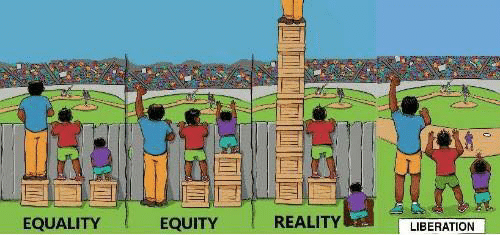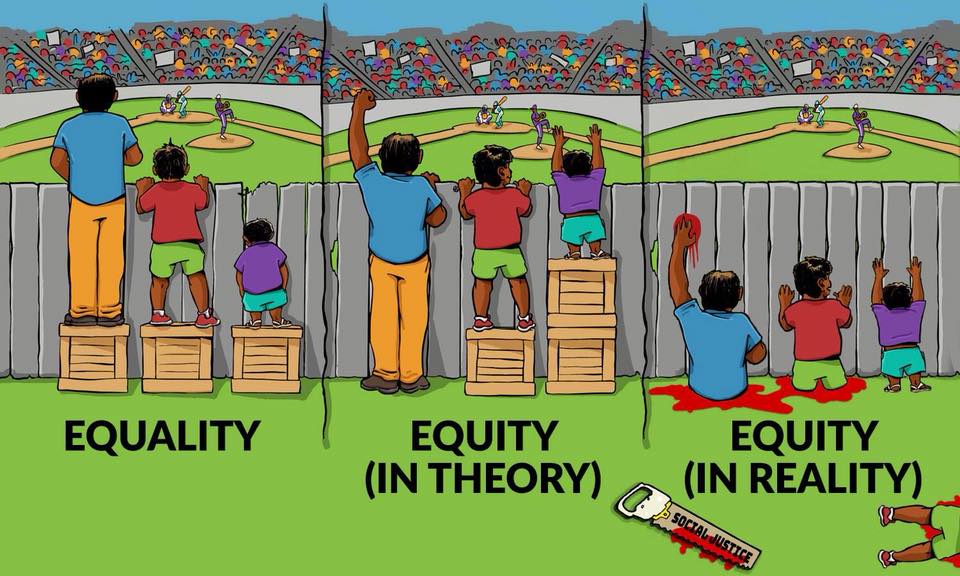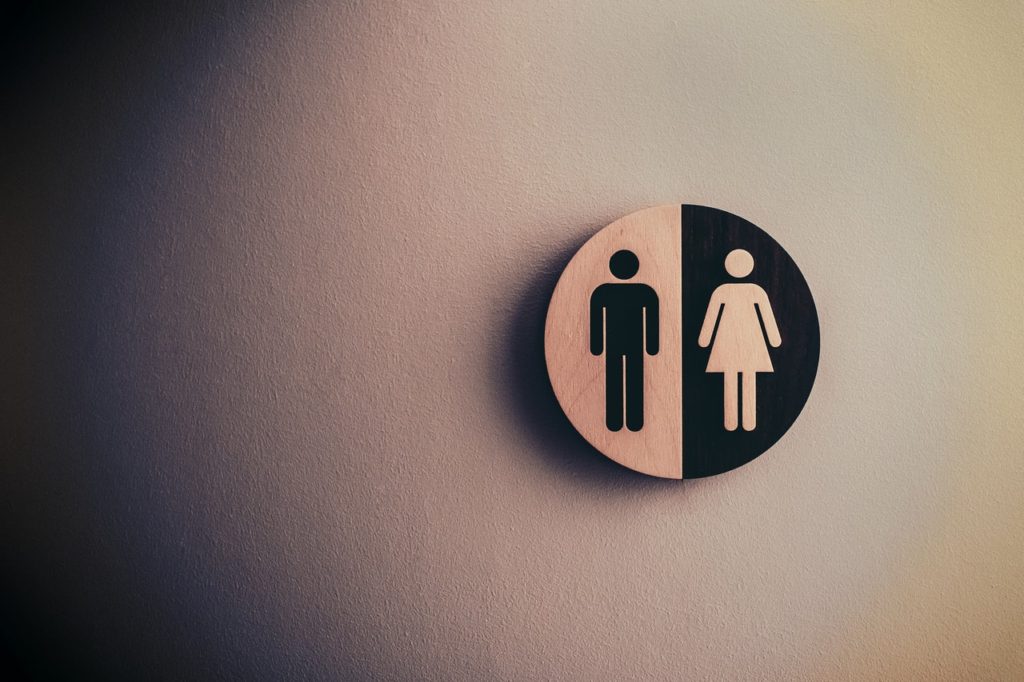Illusory equality and the hidden traps of promoting diversity
I would like to round out this LGBTQ+ History Month blog post series examining equality and discrimination by reviewing some of the traps that lurk in the pursuit of equality and dignity for all people. Much deliberate discrimination is disguised as an action to increase or ‘rebalance’ equality, while the equality and diversity movement itself has caused as many problems as it has solved. Let us consider these in turn.

Myth #1: If we have the same rule for everyone, everyone will be equal
People are all different, and different people need different things to allow them to feel equally safe, happy and accepted. There is no one-size-fits-all solution suitable for everyone. As a result, rules that apply equally to everyone rarely lead to equality, instead they almost always give the comforting illusion of equality while reinforcing existing inequalities. This blog post examining metaphors for equality vs equity explore this dilemma in more detail.

Myth #2: Equality means that those with privilege now will suffer
Some people fear that true equality would reduce everyone to the level of privilege enjoyed currently by the least privileged in society. This has not happened in any country that has achieved greater equality. Those who were disadvantaged have been raised up; no-one has been pulled down.

Myth #3: Everything done in the name of equality is always good
As I suggested earlier, much deliberate discrimination comes disguised as an action to increase equality. Take, for example, the latest attack by the Government on trans people. An attempt is being made to force public authorities to build gender-specific toilet blocks on the grounds that offering trans-friendly gender-neutral toilets has reduced the number of toilets available to women and therefore discriminates against them. The proposals do not simply advocate an increase in women’s toilets or the provision of a women’s toilet block and men’s urinal block alongside gender-neutral cubicles that anyone may use, they intend very clearly and deliberately to prevent councils and other public authorities from providing remove gender-neutral toilets in any new toilet facilities that they build.
This goes much further than its stated remit: it is an act of deliberate legislative and social violence against trans people and one that must be resisted. Architecture is one of the longest-lasting forms of social control and discrimination, and ever since Napoleon widened the streets of Paris to prevent them being blockaded by counter-revolutionaries, has been a favourite method of governments to control the minds and behaviours of their populations.

Myth #4: The equality, diversity and inclusion movement has done no wrong
The early equality movement attempted to achieve representation of minorities who society regarded as being too few for meeting their needs to be reasonably practicable through affirmative action but in doing so, it categorised minority groups, emphasised differences, and created competition and hostility between different minority groups, as well as resentment from a generation of the privileged majority groups who faced losing opportunities as underprivileged groups were helped to positions power in order to correct systemic power imbalances.
This was succeeded by a series of diversity management movements once disparagingly described as “a linguistic game that arose after the equality movement died from bad strategising”. First, came commercial arguments that diverse teams make better decisions. This ended up focusing attention on visible diversity characteristics such as race and gender that also supported a diverse corporate image, meaning invisible minorities such as the disabled and LGBTQ+ people were largely ignored, and managers were encouraged to exploit the commercial utility of hiring a diverse workforce while failing to change the behaviour and culture of their organisations to support these diverse people and make sure they were accepted and felt dignified. Minorities were expected to ‘fit in’, ‘get along’ and accept ongoing low-level hostility in the workplace while being grateful for those with power ‘giving’ them an opportunity.
Next, the diversity movement refocused attention on individual needs and social justice, balancing the needs of individual self-expression with a sense of collective belonging. This worked to an extent but its focus on individuals neglected the need for groups of similar people to organise themselves in order to resist discrimination.
Attempts have been made to integrate these approaches based on a ‘common good’ approach, such as Following on from these successive failures, one being Frémeaux’s proposal that businesses be seen as an “artificial and imperfect societies” in which everyone is held to be valuable, is assumed to work both for themselves and society as a whole, and where mutual self-interest and fairness to all groups of employees in an organisation will be judged individually and collectively by social groups against the fulfilment of their basic Maslowian needs of economic security, social interaction and self-actualisation. Such ideas are in their philosophical infancy. Most businesses attempt to position a watered down version balancing elements of all three historical approaches in an attempt to balance power, equality of opportunity and protect personal dignity while avoiding the worst excesses of any of them. Few, if any, organisations manage to overcome the influence of wider cultural norms and achieve a truly equitable working environment.
Final word
We still have a long way to go, and even the tools we have to work with are far from ideal. Still, if we all work on ourselves, we can make the world a much better place for everyone, one interaction at a time.






Leave a Comment (note: all comments are moderated)